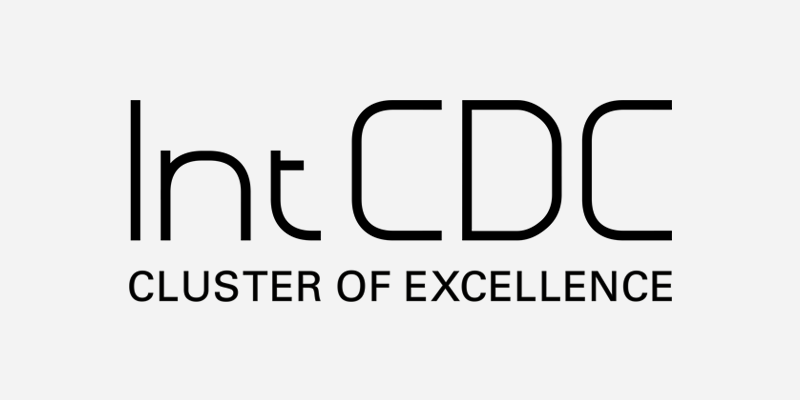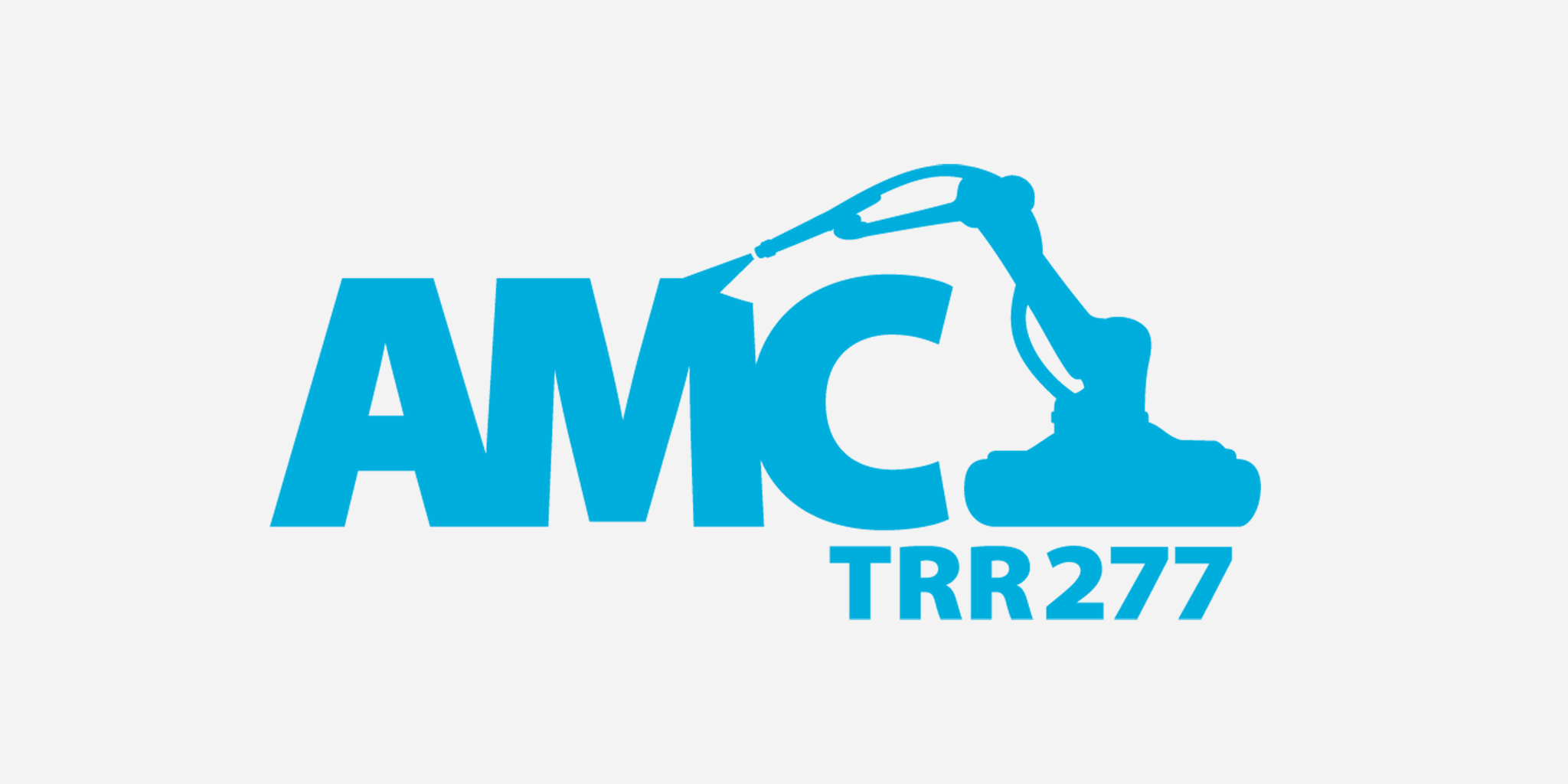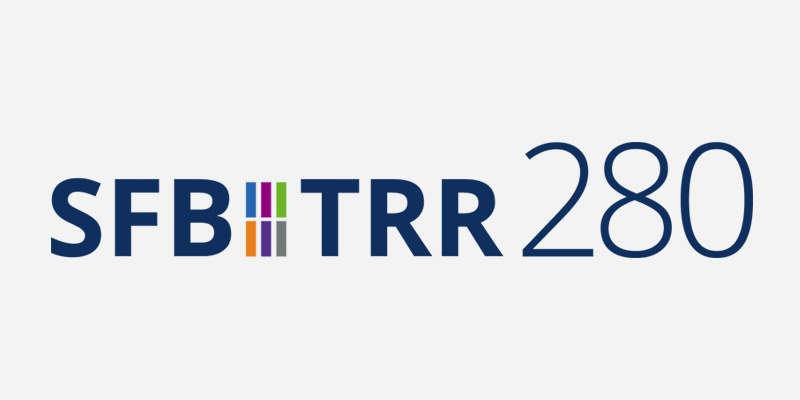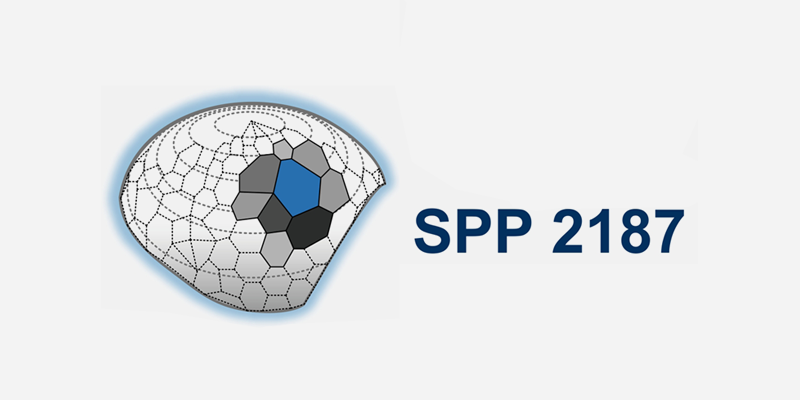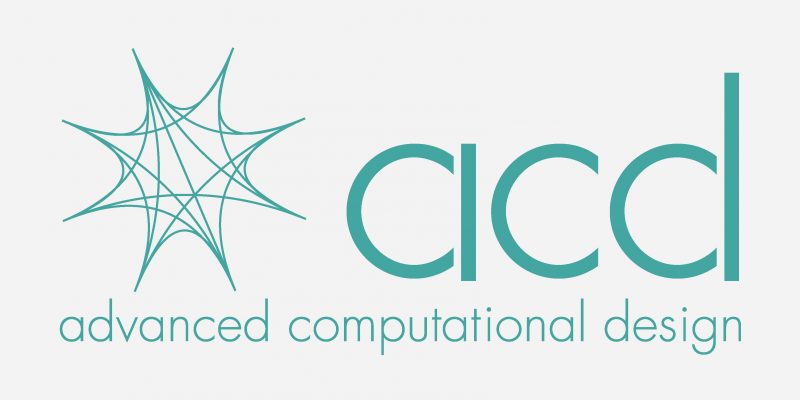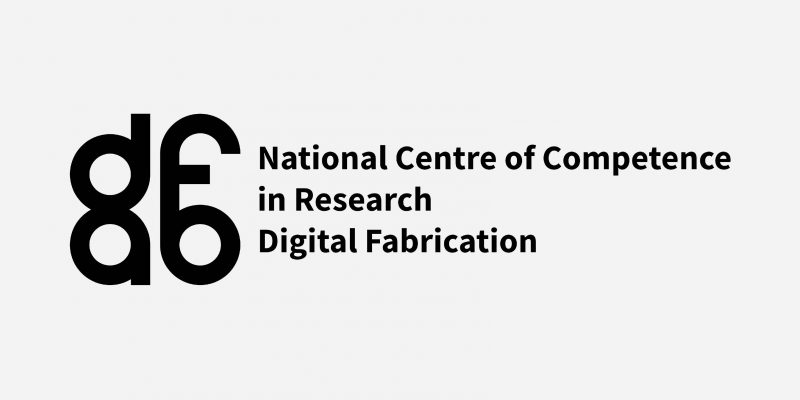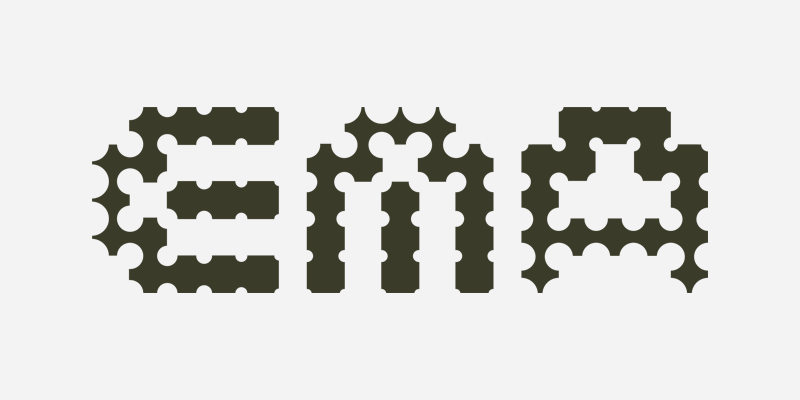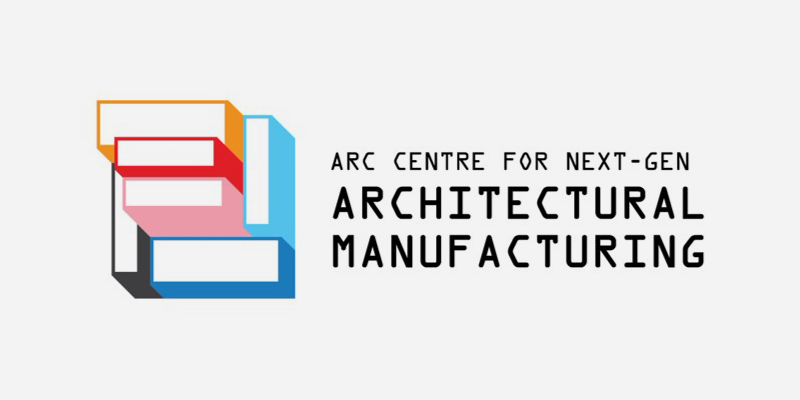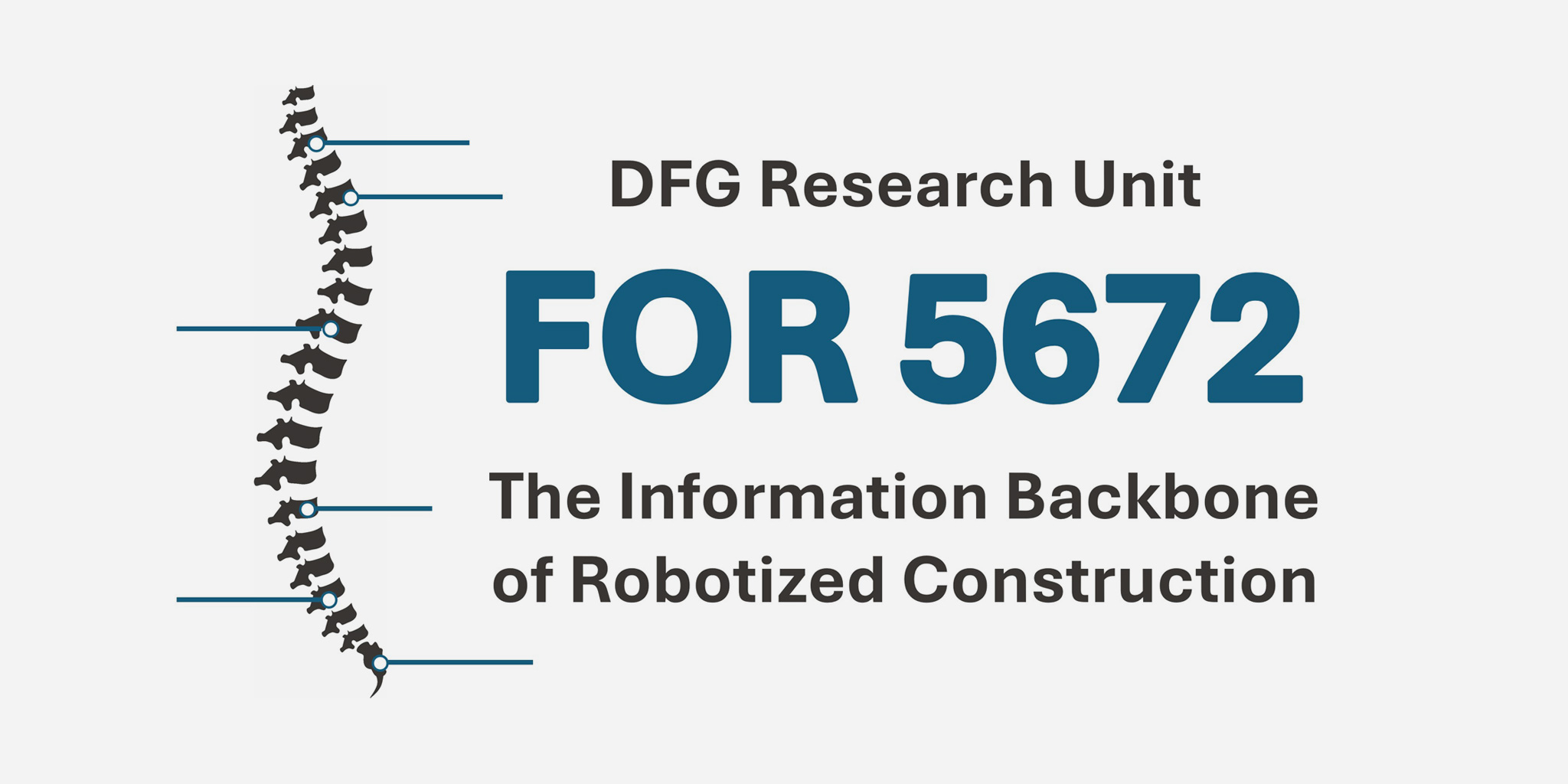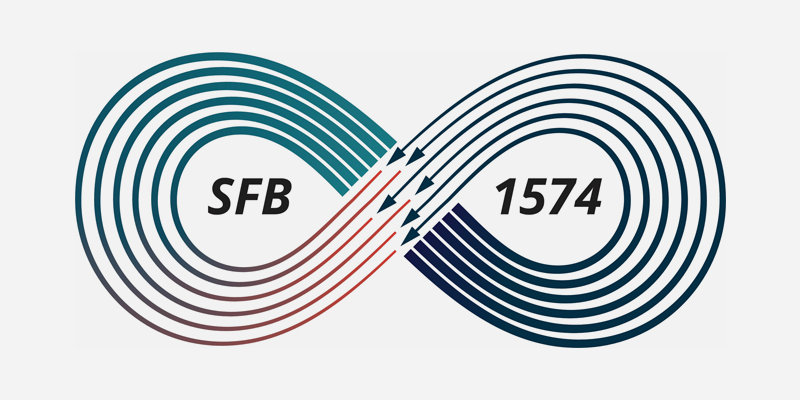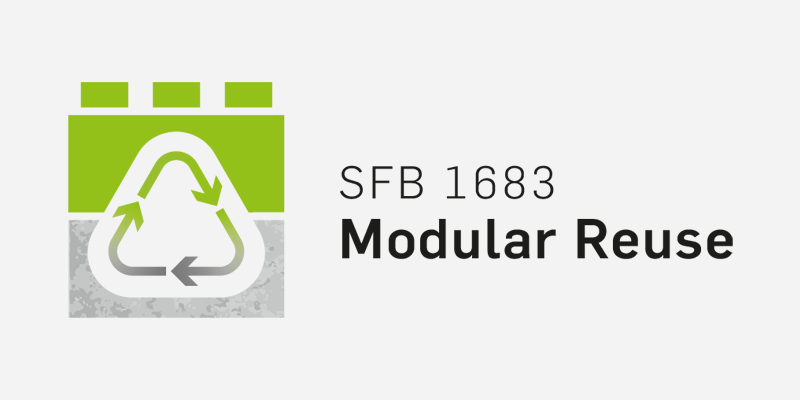Network partners
EXC 2120 IntCDC, Cluster of Excellence
Integrative Computational Design and Construction for Architecture
The vision of the Cluster of Excellence Integrative Computational Design and Construction for Architecture (IntCDC) is to harness the full potential of digital technologies in order to rethink design, fabrication and construction based on integration and interdisciplinarity, with the goal of enabling game-changing innovation in the building sector as it can only occur through highly integrative fundamental research in an interdisciplinary, large-scale research undertaking.
The Cluster aims to lay the methodological foundations for a profound rethinking of the design and building process and related building systems by adopting an integrative computational approach based on interdisciplinary research encompassing architecture, structural engineering, building physics, engineering geodesy, manufacturing and system engineering, computer science and robotics, social sciences and humanities. We aim to bundle the internationally recognised competencies in these fields of the University of Stuttgart and the Max Planck Institute for Intelligent Systems to accomplish our research mission.
The Cluster of Excellence is home to more than 120 researchers from the University of Stuttgart and the Max-Planck-Institute of Intelligent Systems and has been funded by the German Research Foundation DFG since 2019.
Go to the “EXC 2120 IntCDC” homepage
SFB 1244, Collaborative Research Center
Adaptive skins and structures for the built environment of tomorrow
The CRC 1244 is aiming to find answers to the urgent ecological and social questions of our time for the construction industry. Therefore fourteen institutes of the University of Stuttgart are working in close cooperation with extramural institutions and partners on the question of how in view of a growing world population and shrinking resources, more housing with less material can be created in the near future.
The integration of adaptive elements into load-bearing structures, building skins and interior design is considered as an important approach. Therefore the CRC 1244 explores the basics, potentials and implications of adaptivity in the built environment. The novel concepts of adaptivity are applied and tested under real conditions. For this purpose a worldwide unique adaptive high-rise is being constructed on the premises of the University of Stuttgart. Within the next four years this twelve-storey high-rise will explore the novel concepts of adaptivity.
The Collaborative Research Center 1244 with around 50 researchers from the University of Stuttgart, the HafenCity Univeristy Hamburg, the University of the Arts Bremen and the Fraunhofer Institute for Building Physics Stuttgart has been funded by the German Research Foundation since 2017.
Go to the “SFB 1244” homepage
SFB/TRR 277, Transregional Collaborative Research Center
Additive Manufacturing in Construction. The Challenge of Large Scale
The TRR 277 aims to examine Additive Manufacturing (AM) as a novel digital manufacturing technology for the construction industry in an interdisciplinary, cross-location research project. While additive manufacturing technology is already being used for serial production in other industries, there are still fundamental challenges to be solved when transferring it to the construction industry: First, the transfer of AM technologies to the large scale of construction; second, the necessary material and process diversity, which is determined by the complex functional requirements of a building; and third, the required high degree of individualization and flexibility in construction.
The work programme of TRR 277 is guided by two fundamentally new research approaches:
- Combinations of materials and processes: As a central topic of the research program, material and process coordination are considered as inseparable units in additive manufacturing.
- The seamless digitalisation in the building industry: End-to-end digitization is of crucial importance for the successful introduction of additive manufacturing in the construction industry.
The German Research Foundation DFG supports the Transregional Collaborative Research Center with 33 researchers from the Technische Universität Braunschweig, the Technical University of Munich, the Leibnitz Universität Hannover and the Fraunhofer-Wilhelm-Klauditz-Institutesince 2020.
Go to the “SFB/TRR 277” homepage
SFB/TRR 280, Transregional Collaborative Research Center
Design strategies for material-minimized carbon structures. Foundations for a new way of building
The aim of the SFB/TRR 280 is to create the foundations for building the future. Methods suitable for the design, modelling and construction with new materials require in-depth basic research. Ideas for innovative, material-suitable construction elements made of carbon concrete are provided by botany, mathematics and art, thus by disciplines other than construction.
The development of novel structures is linked to questions of manufacturability, product-related sustainability assessment and further progress of the composite material itself. New and innovative design strategies allow for a completely different design language, reduce resource and energy consumption, while at the same time ensuring high usability, load-bearing safety and durability. The cooperation of TU Dresden and RWTH Aachen University combines excellent competences and will take on an internationally visible pioneering role in the research of material-minimised construction with mineral composites reinforced with carbon fibres.
The German Research Foundation DFG supports the Transregional Collaborative Research Center with 50 researchers from the Technische Universität Dresden, the RWTH Aachen University and the Leibniz Institute of Polymer Research Dresden since 2020.
Go to the “SFB/TRR 280” homepage
SPP 2187, Priority Programme
Adaptive modularized constructions made in flux
The aim of the priority program is to develop basic scientific methods for the production of partially adaptive modules from high-performance concrete in industrial flow production. The modules should have series character and enable rapid construction. Visual individuality of the composite structure shall be preserved, so that scalable, adaptive and over the life cycle alterable modules and suitable production concepts are sought. Researchers from the fields of structural engineering, mechanical engineering, computation in engineering and mathematics are addressed to contribute to the following three research fields:
- Design and detailing with a focus on modularization
- Systems and concepts of production for scalable modules
- Digital models for the associated processes
The German Research Foundation DFG supports the priority program since 2020. Within 6 years, around 60 researchers from 21 institutes of a total of 8 universities, i.e. 12 research projects and a coordination project, collaborate jointly.
Go to the “SPP 2187” homepage
ACD, Advanced Computational Design
Special Research Programme (SFB) funded by the Austrian Science Fund (FWF)
The main research question addressed by the SFB “Advanced Computational Design” is how to advance design tools and processes through multi- and interdisciplinary basic research in the areas of digital architecture, integrated building design, computer graphics and virtual reality, discrete and applied geometry, and computational mechanics.
Architecture, Engineering and Construction (AEC) shapes our built environment, exerting substantial environmental, cultural and economic influence on society. However, it is among the least digitized industries, still caught in silo-thinking and sequential planning processes. The Information and Communication Technology field, on the other hand, is highly innovative, creating digital design tools that are well-founded in basic research, but often lack relevant domain knowledge, thus hardly meeting designers’ needs.
We will connect architecture, computer science, mathematics and engineering in order to develop advanced computational design tools able to combine implicit and explicit design knowledge. This unique combination of scientific disciplines and collaborative research with strong theoretical foundations aims to bring radical innovation in computational design by allowing immediate feedback already in early design phases and by expanding solution spaces by computing design variants that cannot be found by current methods. Our research is structured in three areas: Design Methodology (A1), Visual and Haptic Design Interaction (A2) and Form Finding (A3).
Go to the “SFB ACD” homepage
National Centre of Competence in Research (NCCR) Digital Fabrication
The Swiss National Centre of Competence in Research (NCCR) Digital Fabrication was initiated in 2014 and aims to revolutionise architecture through the seamless combination of digital technologies and physical building processes.
Over 100 researchers from six different academic disciplines collaborate to develop innovations in architecture and sustainable construction. The principal foci of research include the topics of robotic assembly, large scale 3D printing, advanced material development, and the integration of digital processes into construction practice. The NCCR Digital Fabrication is funded by the Swiss National Science Foundation (SNSF) and ETH Zurich, and is partnered with EPF Lausanne, the Hochschule für Technik Rapperswil, the Lucerne University of Applied Sciences and Arts, the Bern University of Applied Sciences and Empa.
Go to the “NCCR” homepage
Eco-Metabolistic Architecture
The ‘Eco-Metabolistic Architecture’ builds a holistic model for biogenic materials in Architecture through three perspectives; the harvested, the composite and the living. It was granted in 2021 by the European Research Council and is led by Mette Ramsgaard Thomsen, professor at the Center for IT and Architecture (CITA).
‘Eco-Metabolistic Architecture’ examines the foundations of a bio-based material paradigm for architecture.
It argues that moving from a current reliance on the non-renewable materials of the geosphere, to the renewable and fundamentally cyclical materials of the biosphere can establish foundations for thinking alternative sustainable building practices. By positioning architecture and the built environment as a particular case for bio-based materials, where the long lifespans of buildings support carbon storage, this project identifies the bottlenecks that limit their adaptation into the way architecture is thought, designed and built.
Architectural design is traditionally understood through the durable and the permanent. This project aims to challenge this foundation and bring forth the fundamental differences that bio-based materials engender. With focus on the embedded lifespans of living materials, the fundamental circularity and degradability of biomass and resulting transformative life cycles of the artefacts that they embody, this project proposes a holistic conceptualisation of architecture as an organism built out of living materials.
Go to the “EMA” homepage
ARC Centre for Next-Gen Architectural Manufacturing (ArchManu)
The ARC Centre for Next-Gen Architectural Manufacturing (ArchManu) is proud to be the first Australian group to join the Advance AEC Network. ArchManu is a collaborative, government-funded initiative that integrates cutting-edge research, industry partnerships, and training programs to transform the architecture, design, and engineering professions.
By harnessing digital processes and tools, ArchManu aims to enhance productivity and innovation in the sector, and ultimately, address it’s six key objectives: reduction of (1) material use, (2) waste production, and (3) carbon emissions in building projects; while delivering them (4) on time, (5) to budget, (6) for the benefits of the community. ArchManu research and training will focus on design processes enhanced by machine learning and artificial intelligence, digitally-minded business strategies, and streamlined approaches to the capture, management, and use of data.
With the support of our partners, including leading Australian architectural and engineering practices, professional bodies, and international academic partners, ArchManu will accelerate the digital transformation of the sector and drive advancements in how we deliver buildings.
Go to the “ArchManu” homepage
FOR 5672: The information backbone of robotized construction
This Research Unit will lay the methodological foundations of a cyber-physical framework that allows both to plan and simulate robotic construction in virtual setups, and to deploy and control robots on real construction sites. The intended seamless transition from virtual to real will significantly speed up development cycles and practical implementations of construction robotics. Establishing such a framework requires a coordinated effort of methodological developments resulting in novel approaches that consider the specific challenges that distinguish building construction from production in other industries – the uniqueness of construction projects and the dynamic and constantly evolving nature of construction sites.
Go to the “FOR 5672” homepage
SFB 1574: Circular Factory for the Perpetual Product
The vision of the Collaborative Research Center 1574 “Circular Factory for the Perpetual Product” is to enable integrated linear and circular production on an industrial scale. This should translate used products into current product generations in order to achieve the vision of the perpetual product. To investigate the unknown processes and mechanisms, the Collaborative Research Center deals with scientific questions related to production technology, product development and materials technology, ergonomics, robotics, computer science and knowledge modelling.
The Collaborative Research Center 1574 is divided into three project areas: Project area A is responsible for the overarching design, modeling and control of the circular factory through a highly connected product-production co-design. Project area B focuses on the acquisition and modeling of the individual product instance and the multimodal acquisition of people during object interactions. Project area C enables the implementation of the autonomous and modular production system.
Go to the “SFB 1574” homepage
Collaborative Research Center 1683 – Interaction Methods for the Modular Reuse of Existing Load-Bearing Structures
Interaction methods for the modular reuse of existing load-bearing structures
The aim of the CRC is to investigate the reuse of concrete elements on structural level and to develop fundamental scientific methods for this purpose. Sustainability guides the methodology. The idea is not to demolish existing structures in an uncontrolled manner, but to deconstruct them rationally into modules. The modules are characterized regarding their properties, refurbished and joined into new structures in a modular fashion. Detachable connections make these new load-bearing structures circularly reusable. Moreover, they are adaptable to future changes in use and allow the exchange of modules and the integration of new elements, thus creating a circular modular construction. Existing foundations become foundation modules and attractors when defining new structures. The CRC is structured into three project groups (PG) A, B and C as well as a project for information infrastructure.
Project group A addresses new load-bearing structures made from existing elements. PG B is dedicated to the adaptive characterization of the actual condition of existing modules on material, structural and sub-element level. PG C deals with the overall process including the modular construction kit and automation concepts.
The collaborative research center is funded by the German Research Foundation DFG since 2025. Within the first funding period (until 2028), around 70 researchers from the Ruhr University Bochum (RUB), the Karlsruhe Institute of Technology (KIT), Stuttgart University and Bundesanstalt für Materialforschung und -prüfung, Berlin, collaborate jointly.
